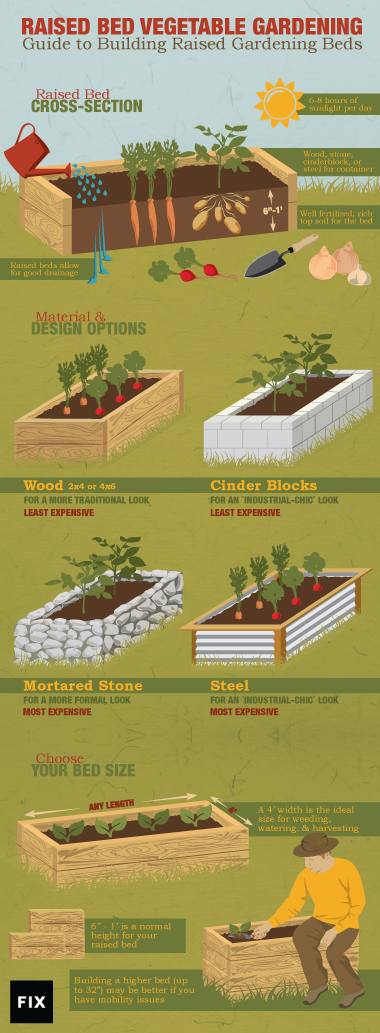Raising Expectations
A Guide To Building Raised Gardening Beds
You may have heard people talking about having raised beds, but really — what are they? How tall does a bed have to be in order to qualify as a raised bed?
What are the benefits? Do you have to have raised beds for your vegetables? Are they difficult or pricey to construct?
Better Soil, Better Drainage, Better Back
Raised beds are great for gardeners who have poor soil (rocky, clay or sandy). By building beds above your soil surface and filling them with higher quality soil,
you’re giving your vegetables a better environment to thrive and produce.
Also, if you are a gardener with mobility issues, you will find gardening with raised beds to be much easier than gardening at ground level. Similarly, if the task of creating raised beds from scratch is too labor-intensive or difficult, there are many pre-made raised garden bed kits available online.
While you don’t have to construct raised beds if you have decent soil, vegetables — particularly root veggies like carrots — tend to like the deep soil that is found in raised beds.
Any bed that is raised above the ground surface is “raised," whether it’s 6” or 2’ high.
Raised beds provide an environment with good drainage for vegetables. The better quality, deeper soil allows water to be absorbed without staying soggy.
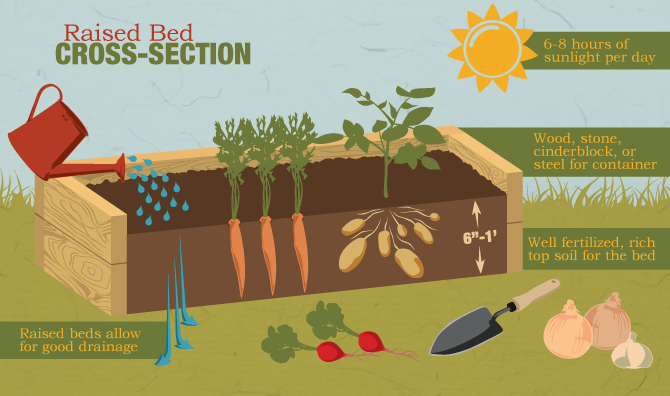
How to Get Started
So now that you’re sold on the idea, here are some tips for planning your own raised beds:
1. Choose a sunny, fairly level site. Most vegetables like as much sun as you can give them, at least 6-8 hours a day, so carefully choose the part of your yard that gets the most sun.
And while you can construct raised beds on a slope, it's easier and less expensive if you can find a part of your yard that is somewhat level.
Sloping yards will need to have beds created in a retaining wall fashion, stepping down into tiers to create level individual beds.
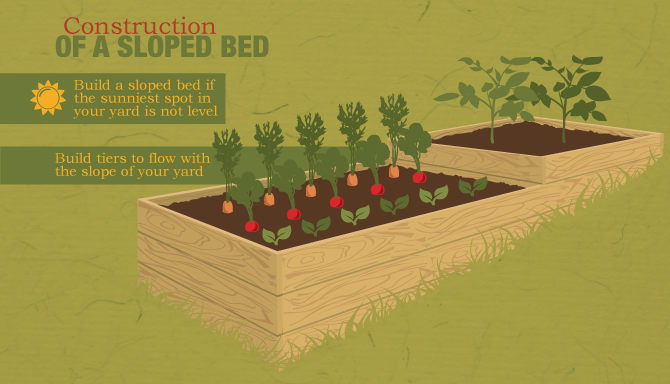
2. Choose your construction material. Raised beds can be built out of wood (2 x 4 or 2 x 6, landscape timbers), mortared stone, cinderblock or even rolled steel.
Wooden beds and cinderblock are the least expensive, while mortared stone can become pricey depending upon the type of stone you choose. Rolled steel will be the most expensive.
Most types of construction can be good DIY projects for the handy homeowner, but the rolled steel beds will most likely need to be contracted out to a professional unless you have welding skills.
Your choice of materials can also be determined by your personal aesthetics — wooden beds tend to look more organic and traditional, while mortared rock is more formal,
and cinderblocks and rolled steel lend an industrial chic look to your garden.
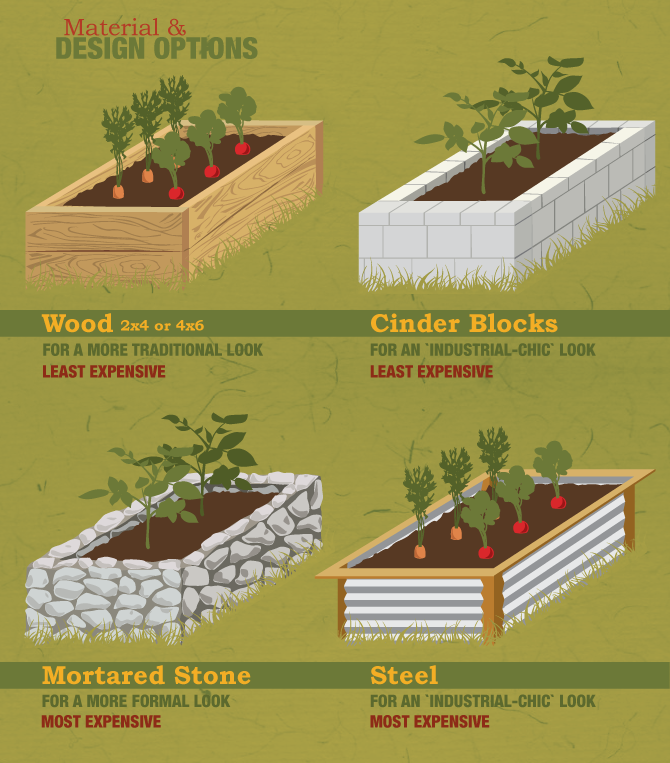
3. Determine your bed size. Raised beds are the most functional when constructed in 4' widths, at whatever length you desire (6', 8', 10' or longer).
This 4' width allows you to easily weed, water and harvest your vegetable garden from both sides without having to step into the bed itself, which would compact the soil.
The height of your bed depends upon your needs. If you simply want a great growing environment for your veggies, then 6" to 1' will be sufficient. However, if you have mobility issues, then 18" to 24" or even 32" will be better.
This increased height will allow you sit on the edge of your bed (particularly if it's constructed out of wood or mortared rock) while you work in your garden, eliminating the need to bend and squat.
The taller your bed, the more materials you will need and the more expensive it will get, so plan accordingly and be willing to construct one bed at a time as your budget allows.
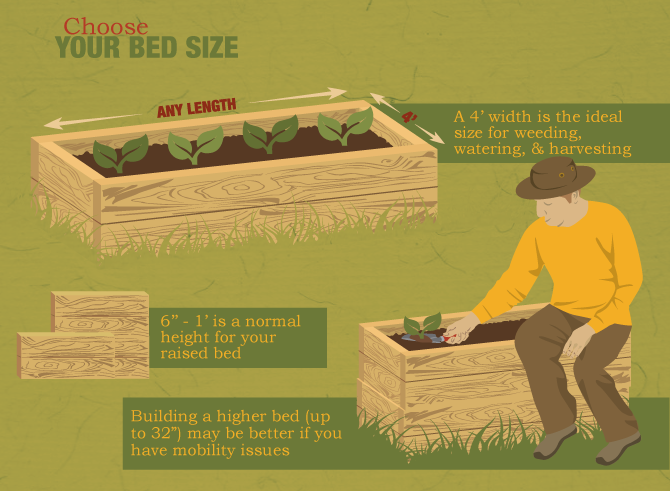
Now when you hear people talking about raised beds, you’ll know what they are. Essentially, raising the level of the ground in which you plant grants you better access to the soil. Raised beds only have to be about six inches tall to get the job done, and the benefits are two-fold. Firstly, because your soil drains better, and inputs can be added more easily, you may see an increase in the health of your crop. Secondly, the height of the bed makes gardening that much easier on your back. These benefits can be felt even on smaller gardening budgets, and the level of difficulty to construct is minimal. So give it a try!
Embed the article on your site
